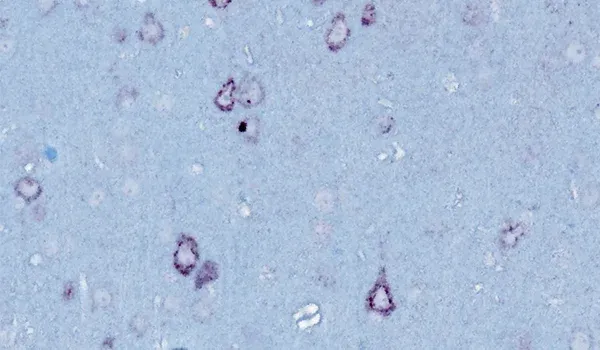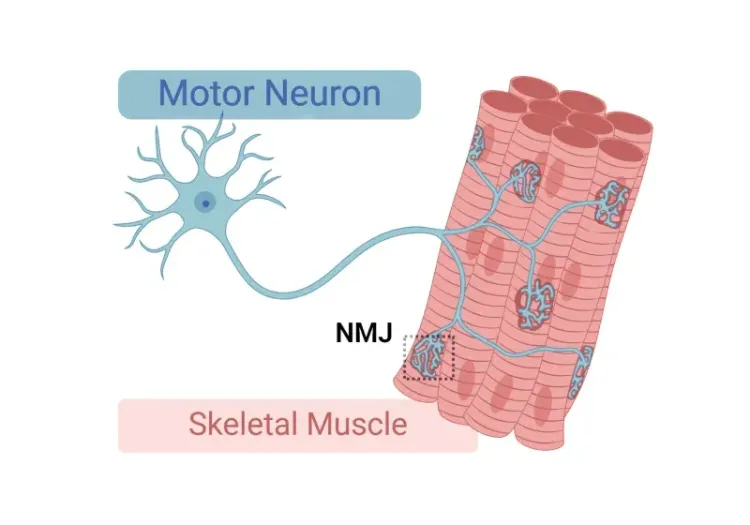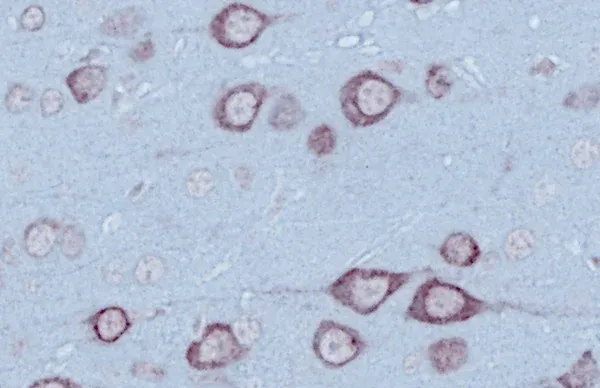TDP-43 Transgenic Models
Cytoplasmic TDP-43 (TDP43; TARDBP) aggregates are a hallmark of familial and sporadic Amyotrophic Lateral Sclerosis (ALS). We provide a range of services using the transgenic rNLS8 (or ΔNLS; delta NLS; dNLS) ALS model of TDP-43 proteinopathy ("TDP-43 models"). Our studies with these ALS mice use either the original mouse model ("Off Dox"), which shows rapid progression over several weeks, or an alternative, slower progressing ("Low Dox") version developed by Biospective.
Both the Off Dox and Low Dox models have mislocalization of TDP-43 aggregates to the cytoplasm, progressive motor deficits, motor neuron degeneration & regional brain atrophy, neuroinflammation (activated microglia & reactive astrocytes), muscle atrophy & altered CMAP, as well as brain, spinal cord, & neuromuscular junction pathology.
Translatability of our ALS Models to Human Disease
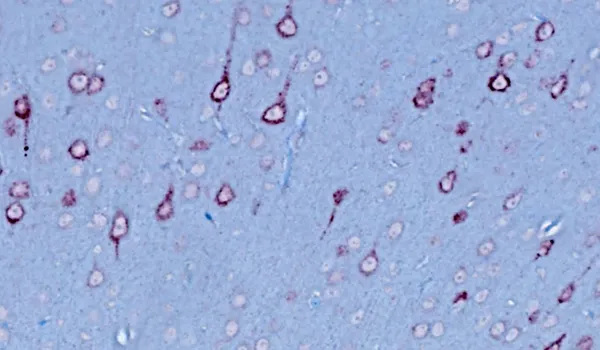
Misfolded Protein Aggregates
Aggregates of misfolded proteins, such as TDP-43 and SOD1, are neuropathologic hallmarks of sporadic and familial forms of ALS. In >97% of cases of ALS, aggregates of TDP-43 are found mislocalized to the cytoplasm of neurons in the brain and spinal cord (Arnold, 2023). Phosphorylated aggregates are also typically observed. These characteristic features are readily observed in our TDP-43ΔNLS mouse models.
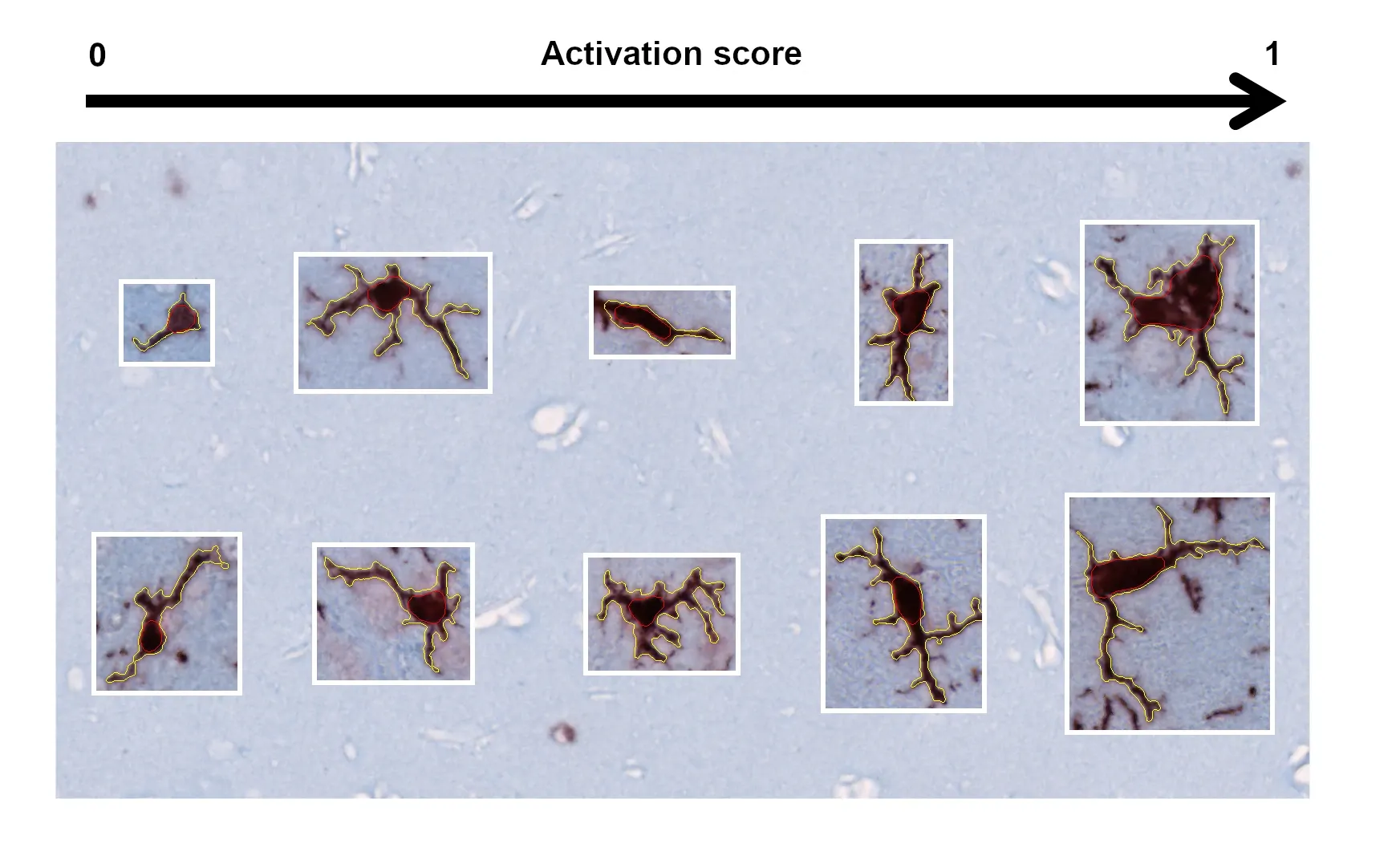
Activated Microglia & Reactive Astrocytes
Activated microglia and reactive astrocytes are prominent neuroinflammatory features in brains and spinal cords from ALS patients, and are thought to play a pivotal role in the disease pathogenesis (Clarke and Patani, 2020; Yang, 2024). We observe time-dependent increases in neuroinflammation in our TDP-43 mouse model. In addition to increased Iba-1 and GFAP immunoreactivity, we have found a strong relationship between activation and motor phenotype using algorithms that we developed to measure microglia and astrocyte morphology.
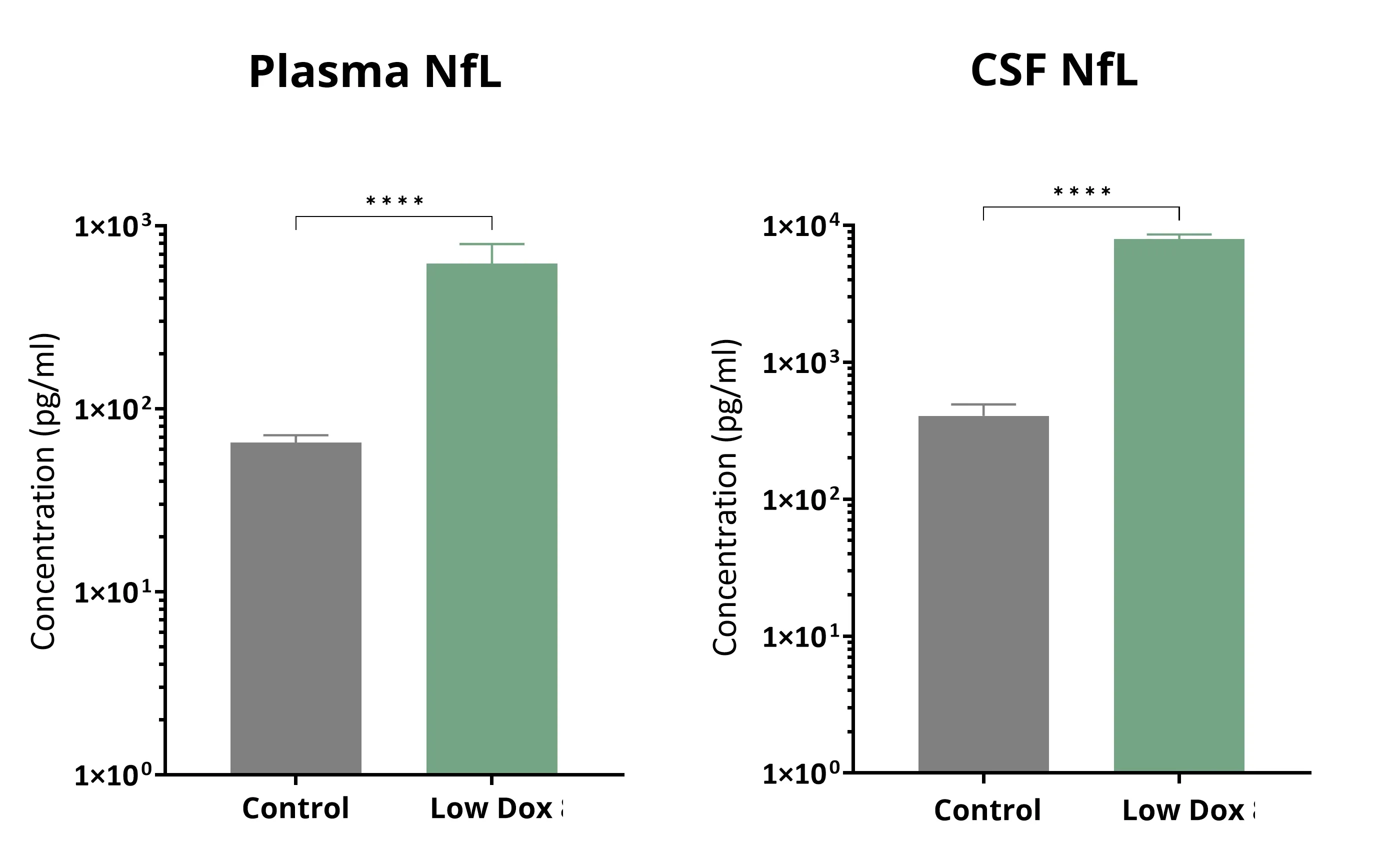
Elevated Neurofilament Light in Plasma & CSF
Neurofilament light chain is increased in the plasma and CSF of ALS patients (Benatar, 2023). Neurofilament light measurements are routinely used in ALS clinical trials. The accelerated approval of tofersen (Qalsody) supported by reduction in neurofilament light levels indicated the FDA’s acceptance of this measures as disease biomarker. We observe highly significant increases in plasma & CSF levels of neurofilament light in our TDP-43 mouse models. Young et al. have demonstrated the ability of a small molecule PIKfyve inhibitor, AIT-101 (INN: apilimod, aka LAM-002A), to decrease neurofilament light levels in our “Low Dox” TDP-43ΔNLS model.
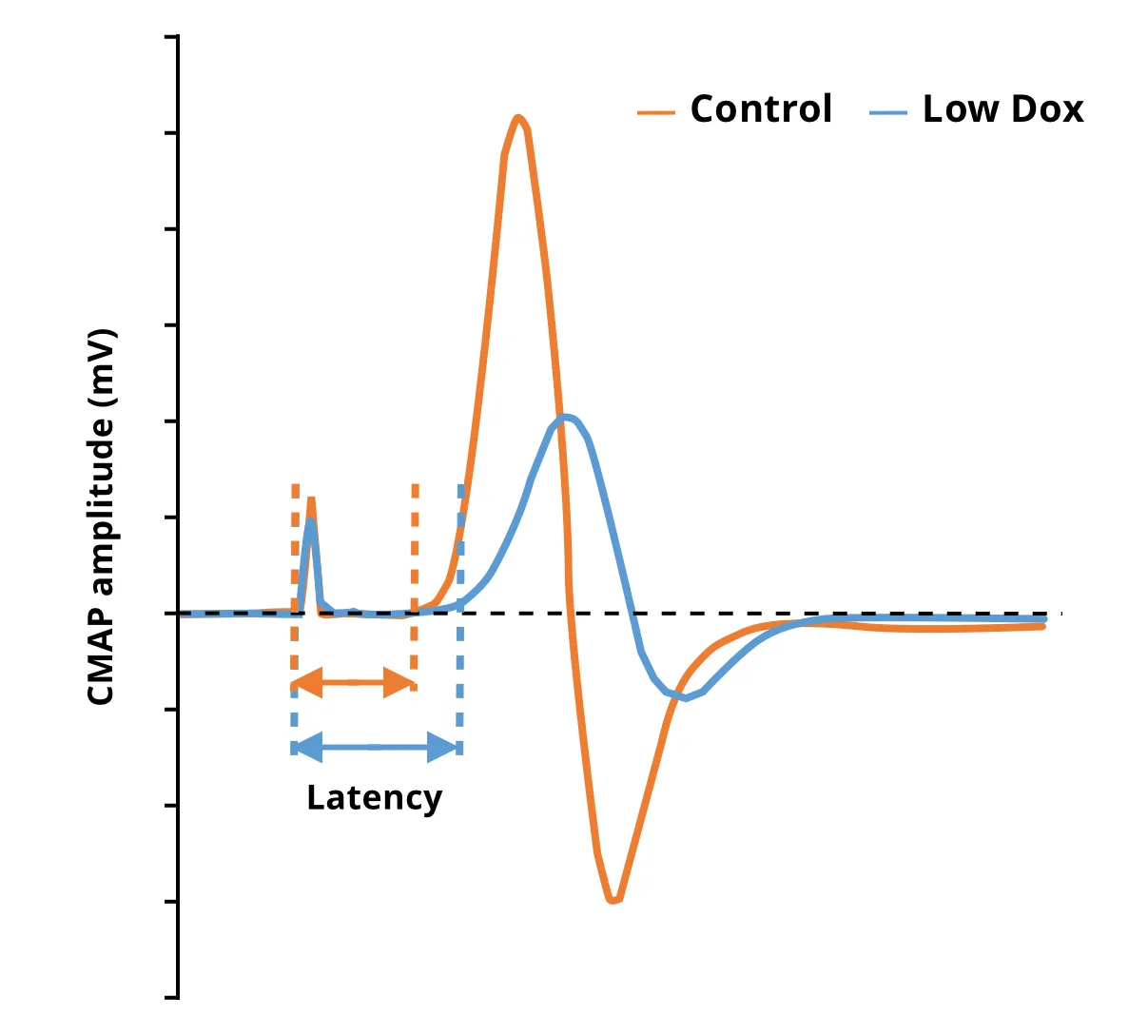
NMJ Denervation & Morphological Alterations
Electrophysiology (e.g. electromyography [EMG]) is a standard test used in ALS patients for diagnosis and monitoring of disease. Reduced EMG measures, such as the Compound Muscle Action Potential (CMAP) reflect neuromuscular denervation due to the loss of spinal motor neurons (Sleutjes, 2021). Denervation and morphological changes of the neuromuscular junction (NMJ) have also been found in muscles from ALS patients (Bruneteau, 2015). In our “Low Dox” TDP-43ΔNLS model, we have found significantly reduced CMAP amplitude and increased latency compared to control mice. Using multiplex immunofluorescence, we have also identified NMJ alterations consistent with denervation.
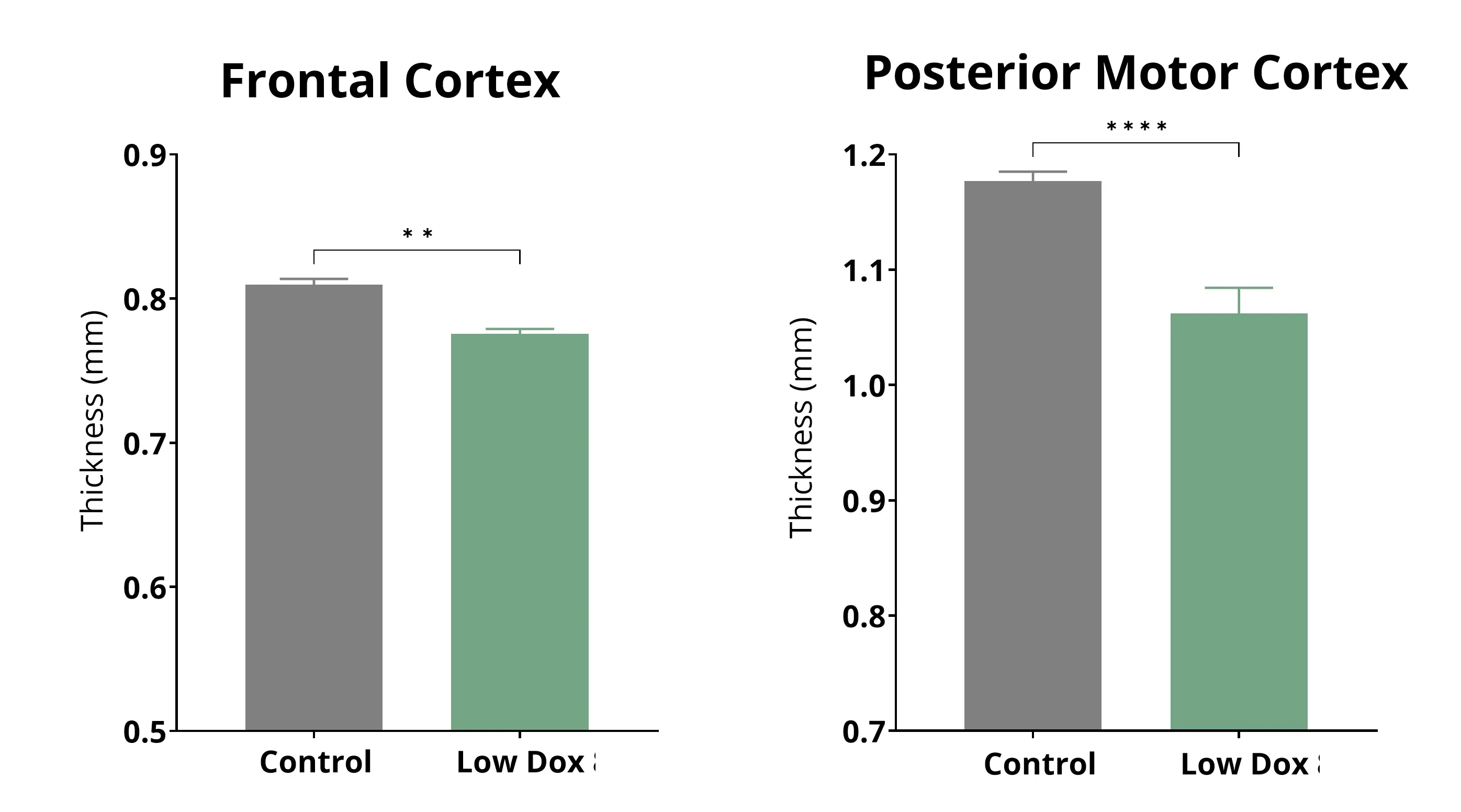
Regional Brain Atrophy
Neuroimaging biomarkers are widely used in clinical trials of neurodegenerative diseases, including ALS. MRI-derived regional volume and cortical thickness measures are highly sensitive to brain atrophy and allow for monitoring disease progression over time. Cortical thinning has been shown in motor and non-motor brain regions in ALS (Yang, 2025). Using high-resolution, whole brain MRI acquisition and fully-automated image processing & analysis, we have shown reproducible brain atrophy (particularly in the motor and frontal cortex) in our Low Dox TDP-43ΔNLS mouse model, thereby serving as a robust in-life measure of neurodegeneration that complements other measures, such as fluid-based neurofilament light chain measures.
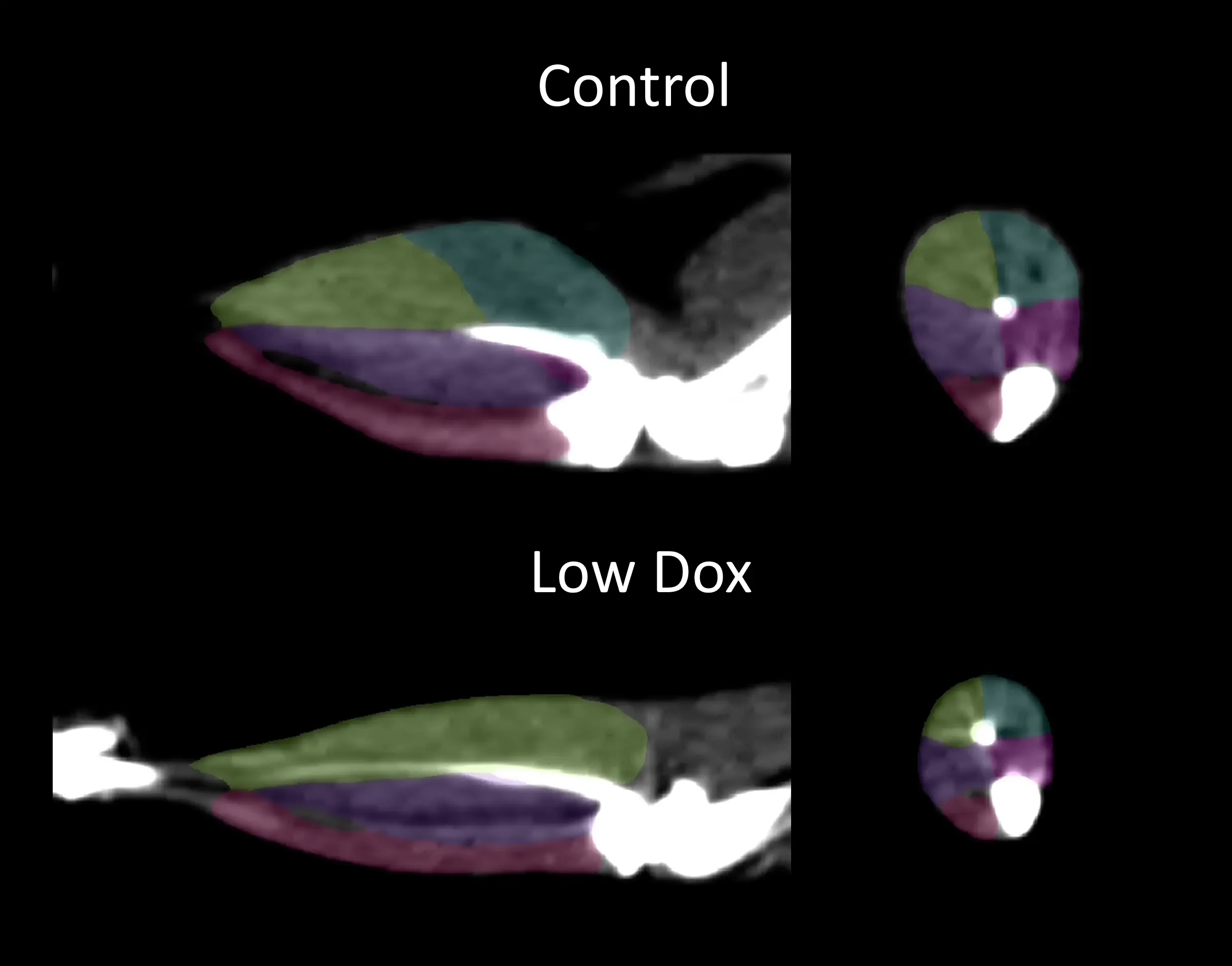
Muscle Wasting & Weakness
Skeletal muscle atrophy and weakness are central clinical features of ALS (Shefner, 2023). Non-invasive imaging techniques have been used to quantify muscle atrophy in ALS patients (Jenkins, 2013; Jenkins, 2018; Wilcox, 2021; Klickovic, 2024). We have used microCT to perform longitudinal measurements of hindlimb muscle loss in our Low Dox TDP-43ΔNLS mouse model and have found highly significant differences compared to control mice. This muscle wasting is accompanied by loss of muscle strength measured using a grip strength meter.
Learn more about our characterization of these ALS mouse models, our validated measures, and our Preclinical Neuroscience CRO services.
Related Content
Up-to-date information on ALS and best practices related to the evaluation of therapeutic agents in ALS animal models.
Neuromuscular Junction (NMJ) Morphology & ALS Models
Insights into neuromuscular junction (NMJ), its role in amyotrophic lateral sclerosis (ALS), and tools & methods used to study morphological changes in NMJs.
ALS Mouse Models & Spinal Motor Neurons
An overview of the involvement of spinal motor neurons in disease progression in mouse models of Amyotrophic Lateral Sclerosis (ALS).
ALS Mouse Models for Drug Development
A guide to the most effective use of research animal models (mouse & rat models) of Amyotrophic Lateral Sclerosis (ALS) for preclinical testing of therapeutics.
TDP-43 ΔNLS (rNLS8) Mice for ALS Drug Development
This resource provides information about the use of the ΔNLS (deltaNLS, hTDP-43ΔNLS, hTDP-43DeltaNLS, dNLS, TDP43 NLS, rNLS8) TDP-43 transgenic mouse model of ALS for preclinical therapeutic studies.
Microglia Morphology in ALS, Alzheimer's Disease & Parkinson's Disease
An overview of microglial morphological analysis and the applications to neurodegenerative disease research and drug discovery & development.
